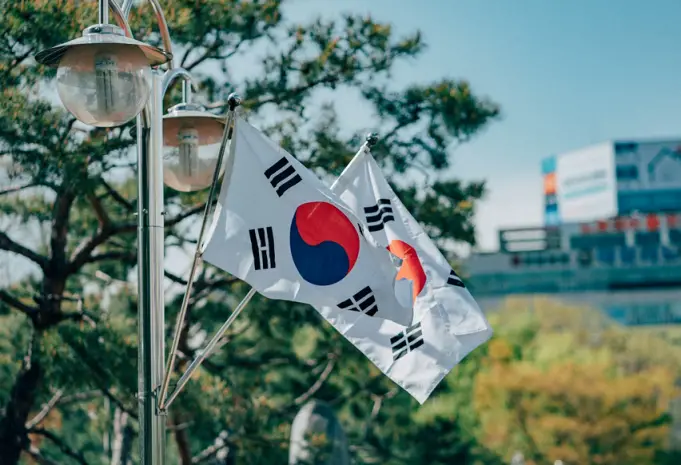The division of the Korean Peninsula, which occurred in the aftermath of World War II, is widely seen as one of the defining events of the 20th century. It is an event which will seemingly always have implications for the world we live in.
The Korean Peninsula, which had been a unified country for centuries, was divided into two separate countries in 1945. This was the result of a mutual agreement between the two occupying powers of the peninsula – the Soviet Union and the United States – who had both agreed to temporarily occupy the peninsula until the issue of the peninsula’s future could be resolved.

Moscow Agreement
The division of the Korean Peninsula was first formalized in the Moscow Agreement of 1945. This came following the end of the Second World War – where the Allied powers (including the United States and the Soviet Union) had claimed victory.
In the Moscow Agreement, the Soviet Union and the United States agreed to divide the Korean Peninsula into two separate occupation zones, with the 38th parallel serving as the boundary between the two zones.
The Soviet Union was given jurisdiction over the northern part of the peninsula, while the United States was given jurisdiction over the southern part. The two occupying powers also agreed that a trusteeship should be established in the Korean Peninsula in order to provide the necessary political stability in the region.
Creation of North Korea and South Korea
The division of the Korean Peninsula would eventually lead to the establishment of two separate states – the Democratic People’s Republic of Korea in the North and the Republic of Korea in the South. These two states were established in 1948, following the election of two separate governments in the respective zones.
The Soviet Union and the United States continued to maintain their respective zones in the peninsula, with both sides refusing to allow the reunification of the two states. This was seen by many as a sign of the growing animosity between the nations, and one of the stepping stones towards the “Cold War“.
Korean War
The division of the Korean Peninsula would eventually lead to the outbreak of the Korean War in 1950. One of the scary facts about the Korean War is that it never officially ended.
The war, which had battling from 1950 to 1953, saw the two sides engage in a brutal conflict that resulted in the deaths of millions of people. The war ended in an armistice, which established a demilitarized zone between the two states.
The armistice also established a de facto border between the two countries, which remains in place to this day. While there have been some border skirmishes, these borders have generally been kept to.
The Takeaway
The division of the Korean Peninsula remains a source of tension in the region to this day. Both North and South Korea have maintained a hostile relationship since the end of the Korean War, and have continued to refuse to allow the reunification of the two countries.
In addition, the presence of the United States and the Soviet Union in the region continues to be a source of tension, with both sides maintaining a strong military presence in the region.
Despite these tensions, however, the people of the Korean Peninsula continue to hope for a peaceful resolution to the conflict. Perhaps one day we will reach this point.














































